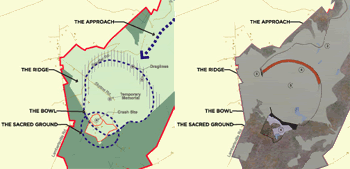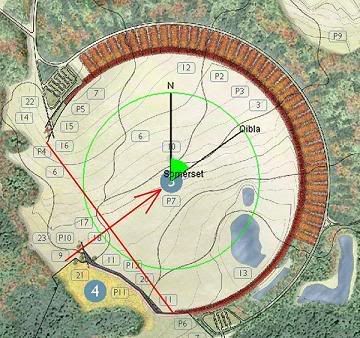It is the 50th day, starting with Yom Kippur (analogous to counting 50 days from Pesach to Shavuos), and is a festival unique to the Beta Israel community.
The holiday symbolizes the acceptance of the Torah. Some see it as a commemoration of the revelation at Mount Sinai however the Kessim have also maintained a tradition of the holiday arising some time in the 15th Century CE as a result of the persecution of Christian Amhara kings. The Kessim retreated into the wilderness in order to appeal to God for His mercy. Additionally they sought to unify the Beta-Israel and prevent them from abandoning the Haymanot (laws and traditions of Beta Israel) under persecution. So they looked toward the Book of Nehemiah and were inspired by Ezra's bringing of the "book of the law of Moses" before the assembly of Israel after it had been lost to them due to Babylonian exile. Traditionally in commemoration of the appeals made by the Kessim and consequent mass gathering, the Beta Israel would make pilgrimages to Midraro, Hoharoa, or Wusta Tsegai (possibly marking locations of resting places from Christian persecution) every year to reaffirm themselves as a religious community.
This year the holiday is a National Holiday for the first time in Israel.

Photo: Ariel Jerozolimski
What started off as a trickle in the 1970's became a flood in the 1980's with Operations Moses and Solomon. Israel brought, and integrated 120,000 Jews from Ethiopia, incurring all the expenses themselves. But this in itself is nothing new. For from its very beginnings, Israel has always traveled to bring a Jew home.
Singing, dancing and reveling in the fulfillment of years spent yearning for a return to Jerusalem, thousands of Ethiopians from all over the country descended on the capital's Haas promenade in Armon Hanatziv Thursday to celebrate Sigd, the annual Beta Israel festival commemorating the revelation on Mt. Sinai and the acceptance of the Torah.
Young and old, secular and religious Ethiopian-Israelis from as far off as Haifa and Ashdod arrived on chartered buses just before noon, passing by make-shift booths which sold everything from ice cream to books of psalms written in Amharic, their native tongue. The Kesim, or Ethiopian rabbis, led the crowd in communal prayers, bestowing blessings upon the masses as the crowd responded by continually twitching their hands - bringing the air of holiness towards them.
Older men with white turbans walked past high-school age youths, their hair done up for the occasion in spikes and large afros. The girls, also dressed to a T, sauntered back and forth, chatting and giggling with their friends.
"We're here to celebrate the Sigd," said one girl, Tehilla, shy and smiling. "But it's not just about Sigd, it's also about unity. Look around: Today all the Ethiopians in Israel are standing together as one."
In addition to the holiday's theme of receiving the Torah, Sigd is also seen as a time of personal reckoning for the Ethiopian community, as members fast and use the holiday for introspection.
Before their arrival in Israel, Ethiopians had also looked upon Sigd as a time for reflecting on the ultimate goal of returning to Jerusalem.
But with over 80 percent of the Ethiopian Jewish community - more than 120,000 - living in Israel today, the holiday has taken on a more national undertone.
"It's true that this is a holiday that celebrates the Torah and the holiness of Jerusalem," said Yisraela, who was dressed in a long skirt, her hair covered by a sequined purple scarf. "But because we're here now, the spirit of the holiday has changed for us.
"When we were in Ethiopia, part of Sigd was to pray that we would merit coming to Jerusalem. Now that we're here, we're living in Israel, the soul searching that I think we need to do is about how we can succeed in Israeli society, and how we can truly fulfill the pilgrimage to Jerusalem, in its fullest sense."
While many of the people milling around on Thursday afternoon told The Jerusalem Post that the dream of immigrating to Israel had now been fulfilled, their commentary on the Ethiopian experience in Israel differed greatly.
"It goes both ways," said Dago, a soldier in uniform who had arrived from Netanya. "The fact that I'm in the army means that on some level, I've already been accepted into Israeli society," he said. "But it depends on the situation. I grew up around Ethiopians, but when I wasn't around them, sometimes I felt like an outsider. You're always in your group, you know, Morrocans are Morrocans, Russians are Russians, and Ethiopians are Ethiopians. But in the army, there's none of that," he said. "There's no Ethiopian and there's no Russian. You're a soldier and a warrior, and that's were it ends."
Full Story
From the first groups coming from the ruins of Europe and the pogroms of the Arab World, to today where groups of Jews arrive from all over the Earth, Israel has found a way to integrate them into their society, and build a strong nation.
Now why can't the Arab nations integrate the Palestinian refugees into their nations?
















